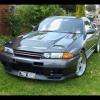Scary Oil Pressure
Announcements
-
Similar Content
-
Latest Posts
-
Seems to be the case mate , still an OK price for a grey import.
-
I’m interested in the carbon diffuser fins and Toshiba MFD screen replacement if they’re still available.
-
@GTSBoy yeah i know it was not the "great" idea but it is and option...but i think i will stay on no BoV rather then trying to make it work with "half" this and that. But that GReddy FV2 is cool...i like that you can make it like stock if you want (and have/make the custom pipes) For other thanks! it was alot of information. But for the sound...a dont rly "like" both of them...specialy if they are loud...but if i "must" choose i would rather have little whooosh rather than sutututu with no BoV....BUT that is what is i gonna get. So for the all info i gather. In my case: No BoV is not that bad cuz it is stock...and iam used to put N/clutch right after rpms are around 1000 so it should be ok...just need to avoid "big" drops. But i do not have the engine in the car so i do not really know how "bad" or good it is. But as i had that little test drive it looked ok. The atmo BoV should be worse car would dump to much fuel specialy between the shifts...so without proper tune/ECU i dont want that. BUT with that...car should drive ok with no problems right? (i do like there is less piping wih this solution) 🙂
-
Usually an RB20 won't stay in closed loop idle anyway. The O2 sensor gets too cold, stops swinging.
-
By joshuaho96 · Posted
They aren't, but it depends on what interests you about an R32-R34. If it's the front engine I6 turbo that tunes well with a manual transmission an E92 335i 6MT is so incredibly cheap. You can get a super clean one for 20-25k USD tops. Put an LSD in it, tune it, have fun with it. If it's the general idea of AWD + turbo and a manual transmission the 996 Turbo is absolutely much more expensive, it's less practical but it's also basically a complete track-ready car from the factory. At least the Mezger doesn't have heaps of oil control issues. And in the US the 996 Turbo and R33 GTR are roughly the same price these days. 996 maybe a bit more now that the hype has abated for old Skylines here.
-







Recommended Posts
Create an account or sign in to comment
You need to be a member in order to leave a comment
Create an account
Sign up for a new account in our community. It's easy!
Register a new accountSign in
Already have an account? Sign in here.
Sign In Now